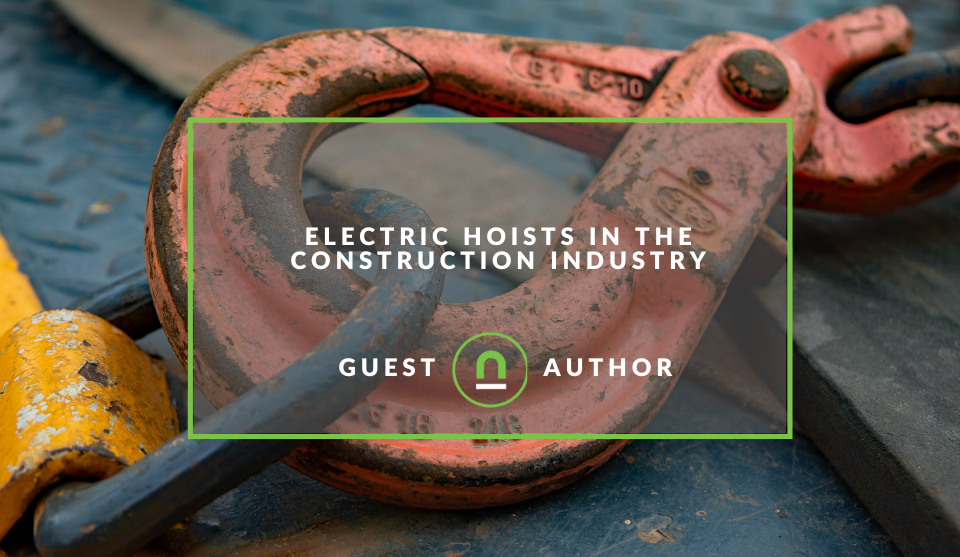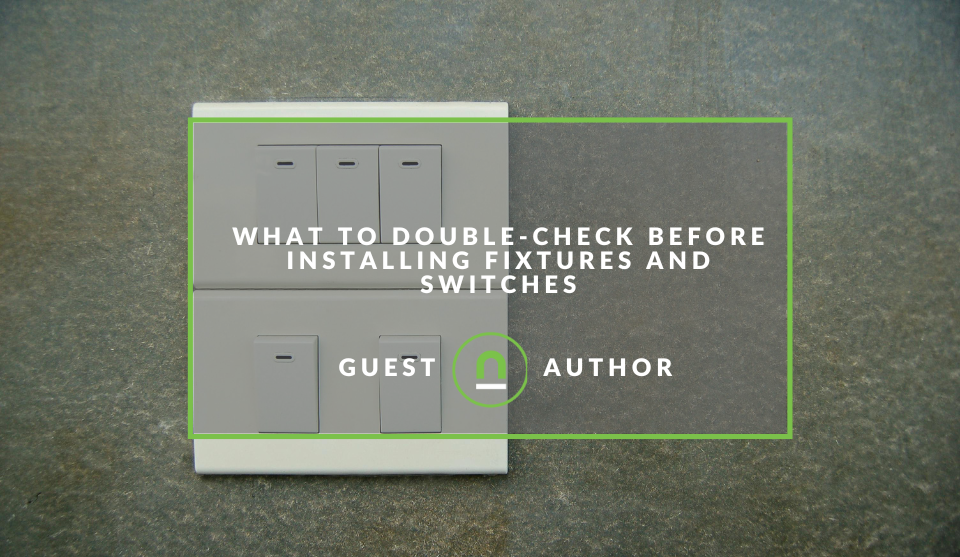Recent posts

Constructive Criticism
Electric Hoists in The Construction Industry
20 August 2025

Geek Chic
Should You Consider Selling Your MacBook Pro?
19 August 2025

Constructive Criticism
What to Double-Check Before Installing Fixtures and Switches
18 August 2025

Hit the Road
Your Refresher Guide To London
13 August 2025
Popular posts
Extravaganza
Trending Music Hashtags To Get Your Posts Noticed
24 August 2018
Geek Chic
How To Fix iPhone/iPad Only Charging In Certain Positions
05 July 2020
Extravaganza
Trending Wedding Hashtags To Get Your Posts Noticed
18 September 2018
Money Talks
How To Find Coupons & Vouchers Online In South Africa
28 March 2019
What to Double-Check Before Installing Fixtures and Switches
18 August 2025 | 0 comments | Posted by Sophia Curter in Constructive Criticism
Installing fixtures and switches may seem like the final and most exciting stage of any electrical project. After all, once the wiring is done and the walls are finished, fixtures like lights, ceiling fans, and switches bring everything to life.
However, rushing into installation without reviewing a few critical details can lead to costly mistakes, safety risks, and future frustrations. That’s why checking everything thoroughly before the final step is essential. An electrician's rough-in checklist is your best friend at this stage, ensuring that every step has been completed correctly before fixtures and switches are installed.
In this guide, we’ll go over the most important things to double-check before you install electrical fixtures and switches. From verifying circuit safety to making sure your layout is correct, these checks help guarantee a smooth installation process and long-lasting performance.
Why Pre-Installation Checks Matter
Many people focus on aesthetics when installing fixtures and switches—choosing the right style, finish, and placement. While those details are important, the underlying safety and functionality matter much more. Fixtures that are wired incorrectly or switches that don’t align with their intended circuit can cause bigger issues later.
Pre-installation checks allow you to:
- Identify wiring mistakes before they become hidden behind a fixture.
- Prevent overloading a circuit or damaging appliances.
- Ensure all electrical codes and safety standards are met.
- Save time and money on rework or troubleshooting after installation.
In short, these checks aren’t just about being cautious—they’re about ensuring safety, efficiency, and professionalism in your electrical work.
Verify Power Supply and Circuit Safety
The first step before installing any fixture or switch is to ensure the power supply is properly set up and safe to use. Never assume a circuit is ready just because wires look neat. Instead, take the time to test and verify everything.
Start by shutting off the power at the breaker and confirming with a tester that no current is running through the wires you plan to handle. Once confirmed, check the circuit’s load capacity. Each circuit can handle only a certain amount of electrical demand. Installing a high-wattage light fixture or multiple switches without accounting for this can trip breakers or even create a fire hazard.
If you are replacing an old fixture, verify that the wiring is still in good condition and not brittle or damaged. Older homes may still have outdated aluminum wiring or ungrounded systems, which require upgrades before new installations can be safely added.
Confirm Box Size and Placement
Electrical boxes are easy to overlook, but they are critical for both safety and function. A box that is too small may overheat or fail to contain wiring connections properly. Before installing a fixture or switch, confirm that the box size matches the number of wires and devices it will house.
Placement is equally important. A switch box that’s too high or low can be inconvenient, while a light fixture box that isn’t centered on the ceiling or wall may affect aesthetics and balance. Double-check box placement with your room layout before mounting fixtures to avoid awkward positioning.
Also, ensure that all boxes are securely fastened to studs or ceiling joists. Loose boxes can cause fixtures to wobble or eventually pull away from the wall or ceiling, creating hazards.
Inspect Grounding and Bonding
Proper grounding is one of the most crucial aspects of safe electrical installation. Before connecting fixtures or switches, check that every circuit has a solid ground wire and that it is securely attached to the box and devices. This ensures excess electricity is safely diverted in case of a fault, protecting both people and appliances.
If you’re working with metal boxes, confirm that they are bonded to the ground system. For non-metallic boxes, make sure the ground wire is connected to each device being installed. Skipping this step may not cause immediate issues, but it compromises safety and could lead to electrical shocks or equipment damage.
Double-Check Wiring Connections
Even experienced electricians sometimes miss a detail when wiring circuits. That’s why reviewing each connection before installing fixtures or switches is essential. Look for loose connections, exposed copper, or wires that are not properly capped or joined.
Pay special attention to:
- Hot, neutral, and ground wires are being correctly identified and connected.
- Wire nuts should be tight and secure.
- Pigtails are being used where necessary for multiple connections.
- No wires are being pinched or stressed within the box.
Taking a few minutes to check connections ensures you won’t have to troubleshoot flickering lights or malfunctioning switches later.
Confirm Switch Orientation and Functionality
Switch orientation may sound minor, but it has a big impact on user experience. A switch that works upside down or controls the wrong fixture can be frustrating and confusing.
- Before installation, verify that each switch:
- Is positioned correctly (up is “on,” down is “off”).
- Controls the intended fixture or outlet.
- Matches the wiring plan from your rough-in stage.
For three-way or four-way switches, test the circuit to ensure it works as intended by temporarily wiring and testing before securing everything into place. This extra step prevents headaches after installation when the walls are already closed.
Review Fixture Support and Compatibility
Not all fixtures weigh the same. A simple ceiling light may be lightweight, but a chandelier, ceiling fan, or mounted fixture requires more support. Always double-check that the electrical box is rated for the fixture type. For example, ceiling fan-rated boxes are designed to handle vibration and weight, while standard boxes are not.
Additionally, confirm compatibility between the fixture and the circuit. Some fixtures, such as dimmable lights or smart switches, require special wiring or compatible dimmers. If your setup doesn’t match, you may end up with buzzing lights or malfunctioning controls.
Test Before Final Installation
One of the most overlooked steps in electrical installation is testing before fully securing the fixture or switch. Once everything is temporarily connected, turn the power back on and confirm that the switch works, the fixture powers on, and no breakers trip.
Testing ensures that any wiring errors are caught before fixtures are fully mounted, saving you from having to remove and reinstall them. Once testing is complete and successful, you can safely secure everything in place.
Check Compliance with Local Codes
Every region has electrical codes that must be followed for safe and legal installation. These codes dictate everything from wire sizes to box fill limits. Before completing the installation, double-check your work against local building and electrical codes.
If you’re a homeowner doing DIY work, it’s a good idea to consult an inspector or professional electrician to confirm compliance. Code violations may not only compromise safety but also cause issues when selling a property or filing insurance claims.
Final Walkthrough: A Professional Habit
The best electricians always do a final walkthrough before declaring a job complete. Walk through the area and test every switch, outlet, and fixture. Check for proper alignment, functionality, and secure installation. Make sure switch plates and covers are snug, with no gaps exposing wires.
This last check guarantees that your work is not only functional but also neat and professional, which is just as important for long-term satisfaction.
Keep Your Checklist Close By
Installing fixtures and switches may feel like the final, straightforward step in an electrical project, but it’s one of the most critical stages. Double-checking everything beforehand helps avoid costly mistakes, ensures compliance with codes, and most importantly, keeps your home safe. From verifying circuit safety to checking grounding, box placement, and switch orientation, each step plays a role in the success of the project.
Whether you’re a DIY enthusiast or a professional, following a systematic approach and using tools like an electrician's rough-in checklist ensures you don’t miss essential details. Take the time to verify everything before installation, and you’ll enjoy peace of mind knowing your electrical system is both safe and reliable.
Tell us your story.
Would you like to write for nichemarket just like Sophia has? Find out how to submit a guest post, and when you're ready, you can contact us.
Are you looking to promote your business?
Construction or renovation businesses can create a free business listing on nichemarket. The more information you provide about your business, the easier it will be for your customers to find you online.
Registering with nichemarket is easy; all you will need to do is head over to our sign-up form and follow the instructions. If you require a more detailed guide on how to create your profile or your listing, then we highly recommend you check out the following articles.
Recommended reading
If you enjoyed this post and have time to spare, why not check out these related posts and dive deeper down the rabbit hole that is decor and interior design.
You might also like
A Beginner’s Guide To Solana Price Action
04 August 2025
Posted by Edward Fourie in Money Talks
Are you stepping into the world of crypto and want to know about the Solana token and the potential price? Check out our introduction to trading this...
Read moreElectric Hoists in The Construction Industry
20 August 2025
Posted by Phil Lazenby in Constructive Criticism
Electric hoists are essential in construction, boosting efficiency and safety. They lift heavy materials with precision, reducing manual labour risks...
Read more{{comment.sUserName}}
{{comment.iDayLastEdit}} day ago
{{comment.iDayLastEdit}} days ago
 {{blogcategory.sCategoryName}}
{{blogcategory.sCategoryName}}
